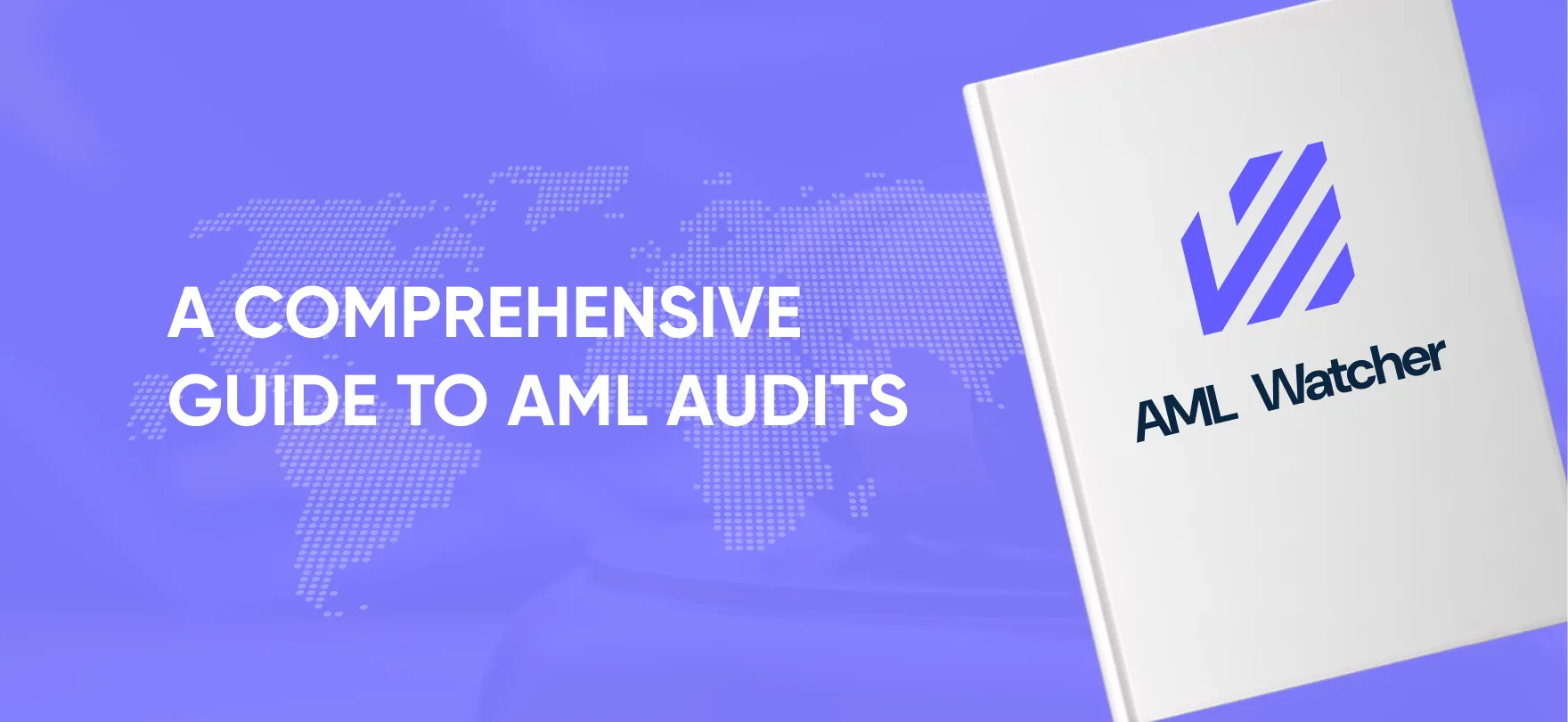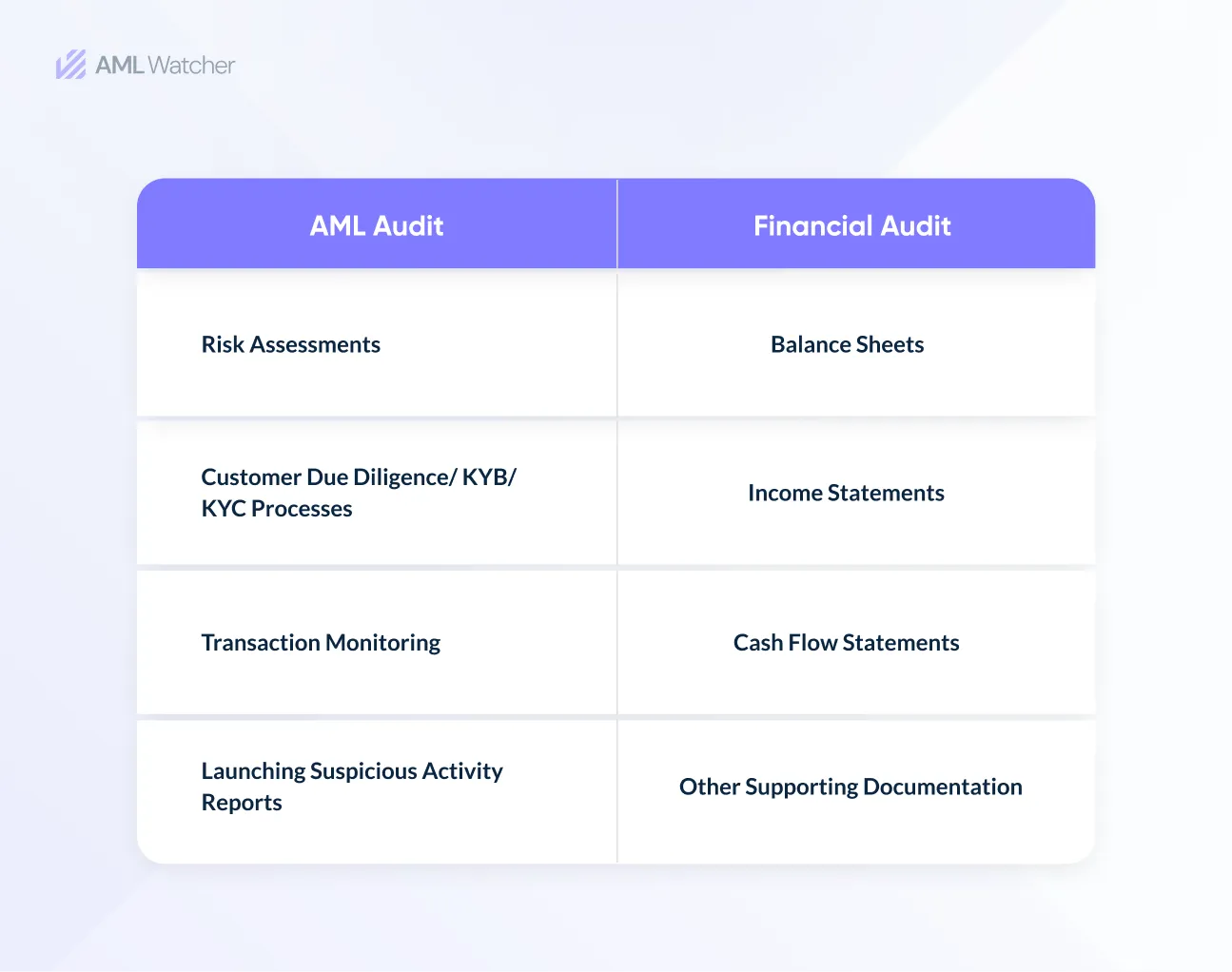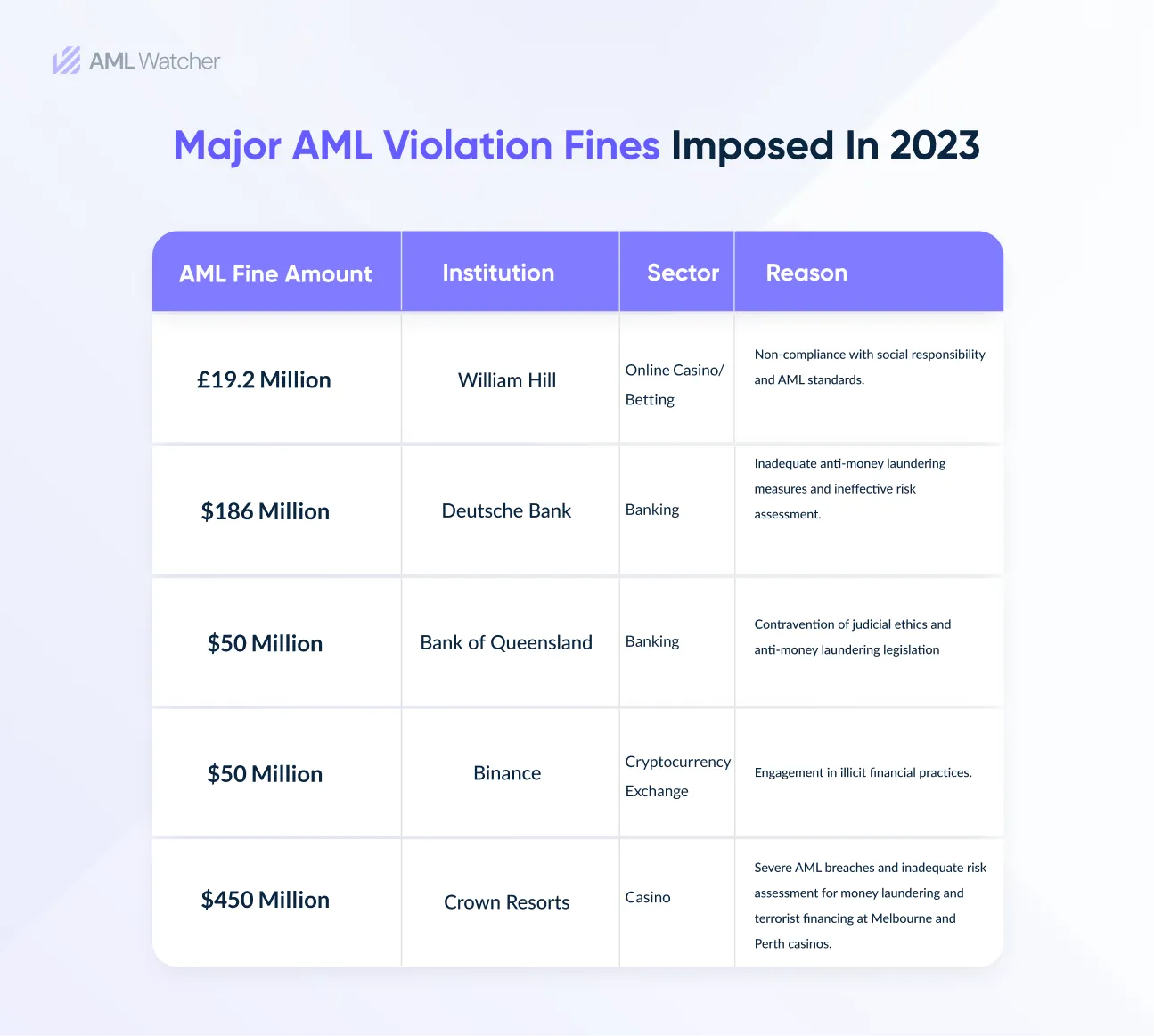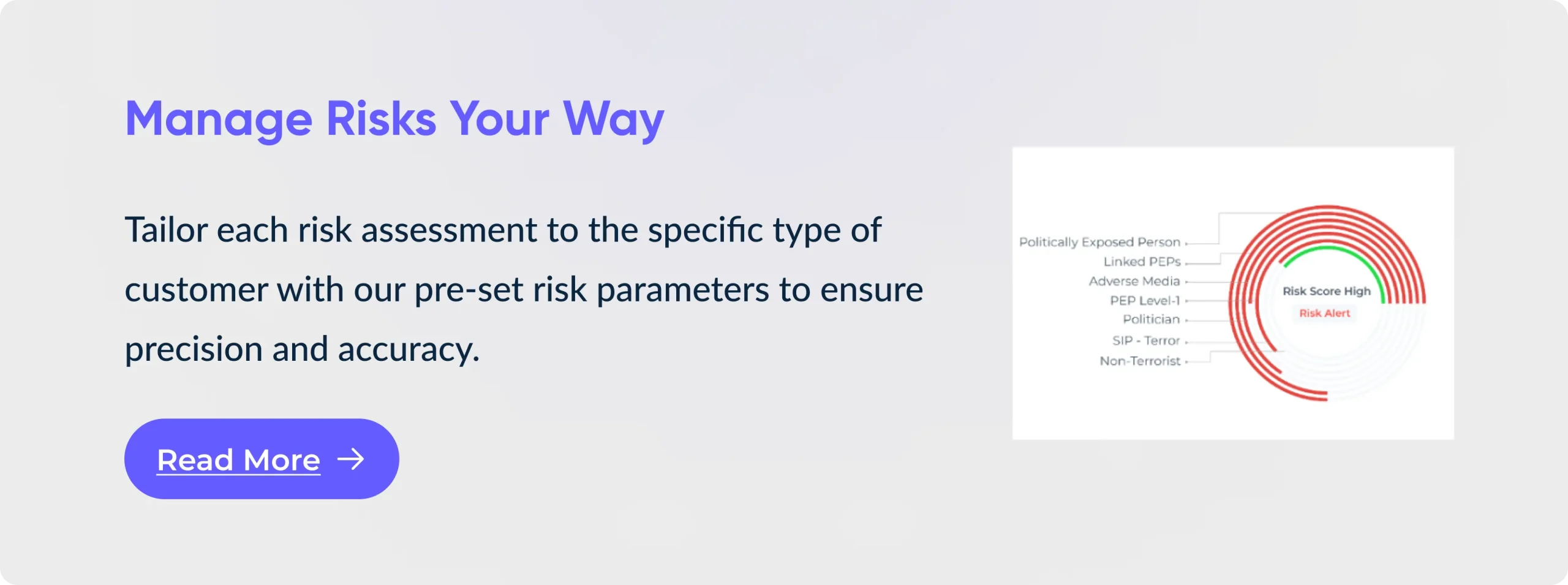
A Comprehensive Guide To AML Audits
“Money laundering is a very sophisticated crime, and we must be equally sophisticated.”
— Janet Reno (Attorney General of the U.S.)
As the AML regulations are getting more complex and dynamic, the expectations to keep up with these changes are increasing at an alarming rate. To match the pace, financial institutions and AML compliance teams need to amp up their AML policies and internal controls.
The Basel AML Index 2022 reported a negligible decrease in the global risk of money laundering, with an average risk level of 5.25 out of 10. This stagnation suggests that AML frameworks have not significantly improved and are allowing more financial crimes to persist.
The lack of an AML audit could be a key reason for poor AML compliance. While increasing spending on the problem is important, it alone will not solve the issue.
To effectively resolve AML compliance audit gaps, it is critical to properly evaluate the root causes of AML penalties and violations, ensuring that the appropriate corrective measures are taken.
Wondering how AML audits cover major AML compliance gaps? Give this article a quick read to explore in detail about;
- Why is the AML audit important?
- The top penalties before and after the year 2023.
- How financial institutions can adopt AML audit program to avoid becoming the next headline.
How Does Lack of Audit Facilitate Money Laundering?
The rapid advancements in digital technologies, particularly blockchain and cryptocurrencies, have transformed the global financial landscape. While these advancements offer convenience and efficiency in transferring money from one place to another, they also present new challenges in combating money laundering risks.
Thus, AML audits play a crucial role in ensuring the effectiveness of these financial systems by identifying vulnerabilities, maintaining AML compliance, detecting suspicious activity, and improving AML risk management. Regular audits among financial institutions can strengthen their AML measures, protect their reputation, and contribute to the overall integrity of the financial system.
AML Audit Vs. Financial Audit: Two Different Notions
AML audits determine a company’s effectiveness in hindering money laundering activities. The major aim is to ensure compliance with anti-money laundering laws and standards.
On the other hand, financial audits focus on identifying the integrity and accuracy of a company’s financial records and statements.
AML audit regulations are although not universally obligatory, but organizations are advised to consider the strategic value of both audit approaches strongly.
Key areas reviewed in financial and AML/CFT audits include:
Why are AML Audits Important?
The most essential factor of AML audit is compliance with global AML regulations, which necessitates regular inspections to align with the latest regulatory frameworks.
However, considering the broader context, AML audits are one of the vital steps of anti-money laundering programs that assist financial institutions in mitigating money laundering fraud.
These audits are significant in detecting the illegal money that once unknowingly filtered into the general financial system.
Regular AML audits mean that businesses can stay updated on changes in the regulatory realm. They can be achieved through the following steps:
- Implement a robust internal audit function.
- Strengthen the AML risk based approach.
- Conduct a thorough review of the internal compliance department’s management processes, including risk assessment and regulatory reporting.
Frequent checks serve as helpful for elevating a brand’s reputation with stakeholders and regulators. Additional perks can include the mitigation of substantial non-compliance fines and enhanced client confidence.
Key Takeaways to Showcase an Effective AML Audit Program
Appropriate AML audits are essential in assuring a firm’s management that all operations are conducted in strict adherence to applicable laws at both international and domestic levels to ensure business protection.
For an effective AML audit, MLROs need to implement the following mandatory things:
- Maintain a strong AML/CFT compliance framework.
- Adhere to applicable laws and regulations in all jurisdictions.
- Conduct frequent risk assessments to verify and hinder unprecedented dangers linked with terrorist financing and money laundering.
- Verify client information and understand their business nature.
- Ensure that your employees adhere to stated AML processes, policies, and controls.
- Examine and report unusual activities.
- Implement enhanced due diligence and ongoing monitoring for high-risk clients, services, jurisdictions, and products.
- Maintain and secure legally mandated data.
- Implement stringent measures for non-adherence to policies and regulations.
Top AML Penalties And Regulatory Actions in 2024
The global economy has expanded dramatically from 3.2% in 2024 and is expected to reach 3.3% percent by 2025. This significant growth has subsequently increased the risks, making AML compliance and enforcement increasingly critical.
This global economic growth may bring higher chances of money laundering risks, accelerating worldwide governments’ steps to crack down. Regulatory bodies are regularly imposing stricter AML rules and hefty fines on businesses that don’t have mandatory a AML audit checklist.
Let’s review the most famous AML fines cases:
Case 1: RBC’s $65 Million Fine
Background: Royal Bank of Canada’s (RBC) US subsidiary, City National Bank, was fined $65 million by the Office of the Comptroller of the Currency (OCC) for significant lapses in its risk management and internal controls in Feb 2024.
AML Failures: The OCC identified systemic failures in risk management practices, which resulted in risky banking operations.
Corrective Actions: RBC was instructed to improve internal controls, operational risk management, and strategic planning.
Outcome: The $65 Million fine highlights the importance of efficient AML audits to avoid regulatory penalties and mitigate financial risks.
Case 2: MGM Grand and Cosmopolitan’s $7.45 Million Fine
Background: In 2024 MGM Grand and Cosmopolitan were hit with a $7.45 million penalty for breaking specifically the Bank Secrecy Act (BSA).
AML Violations: The casinos failed to report suspicious activity and allowed a known illegal bookmaker to gamble and settle debts in cash, despite awareness of his criminal activities.
Compliance Shortcomings: This failure to monitor and report suspicious transactions violated BSA audit requirements.
Outcome: The fine serves as a reminder of how important it is for all financial institutions—including casinos—to give AML audits priority to reduce the risk of money
Case 3: Commerzbank’s €1.45 Million Fine
Background: In April 2024, Commerzbank was fined €1.45 million by the German Federal Financial Supervisory Authority (BaFin) for failing to follow anti-money laundering requirements.
Key Violations
Outdated Customer Information: The bank failed to keep its customer records up to date.
Insufficient security measures: They were in place to prevent terrorist financing and money laundering.
Omission of Enhanced Due Diligence (EDD): The bank failed to conduct the required EDD checks.
Consequences
Penalty: BaFin received a €1.45 million penalty for noncompliance with AML rules.
Implications: This penalty emphasizes the significance of strong AML compliance processes in financial institutions to avoid financial crimes
Top 6 AML Audit Requirements for Enhanced AML Regulatory Compliance
AML audit checklist ensures the organization’s comprehensive risk assessment. This AML checklist will serve as a comprehensive tool in detecting an organization’s adherence to set anti-money laundering regulations. Additionally, it portrays the effectiveness of its AML program.
But how can institutions comply with these AML Audit checks?
Financial institutions need to strictly follow key AML Audit requirements mandated by regulatory bodies, including,
-
AML Compliance Program Evaluation
An AML audit determines if the institution’s AML program meets regulatory requirements and discovers any weaknesses in its ability to deter financial crimes.
AML Watcher supports AML compliance program evaluation by providing extensive AML screening data with over 100,000 sources, including global watchlists, PEPs, sanctions lists, and adverse media, ensuring that institutions adhere to regulatory standards for detecting high-risk individuals and entities.
-
Sanctions and Embargo Adherence
Regular AML audits confirm that the organization effectively screens for sanctions and embargoes, guaranteeing compliance with international regulatory frameworks.
AML Watcher offers continuous AML screening for sanctions and embargoes, ensuring that institutions are compliant with global regulations such as those from FATF, OFAC, and EU directives, by flagging individuals and entities listed on international sanctions lists in real-time.
-
Customer Due Diligence (CDD) and Enhanced Due Diligence (EDD)
The audit assesses the performance of CDD and EDD systems, ensuring that high-risk people and transactions receive enough scrutiny.
AML Watcher supports CDD and EDD by screening customer profiles against global sanctions, PEPs, and watchlists, ensuring that institutions can spot and assess higher-risk customers, particularly politically exposed persons and individuals from high-risk jurisdictions.
-
Suspicious Activity Report (SAR)
Regularly, an AML audit examines the institution’s SAR filing process to ensure that suspicious activity is promptly and accurately reported to authorities.
AML Watcher does not directly handle SARs, but its real-time alerts and risk profiling allow institutions to flag potential risks, facilitating the SAR filing process by providing essential screening data to detect suspicious activities.
-
Employee Training and Awareness Implementation
An AML audit determines if employees are appropriately trained and informed of the latest AML standards, allowing them to detect and prevent potential money laundering actions.
While AML Watcher doesn’t provide direct training, it equips institutions with real-time data updates and actionable alerts, enhancing employee awareness by ensuring staff and AML analysts can easily access current AML screening results and respond to high-risk findings. This will help them to take informed action.
-
Independent Auditing and Compliance Testing
An AML audit itself serves as an independent test of the institution’s AML practices to ensure they meet regulatory standards and work properly.
AML Watcher assists in independent audits by offering data insights and comprehensive reports, enabling institutions to test the effectiveness of their screening procedures. Additionally, it ensures compliance with AML regulations during audits.
We are here to consult you
Switch to AML Watcher today and reduce your current AML cost by 50% - no questions asked.
- Find right product and pricing for your business
- Get your current solution provider audit & minimise your changeover risk
- Gain expert insights with quick response time to your queries









